-
 Bitcoin
Bitcoin $107,725.9156
0.27% -
 Ethereum
Ethereum $2,481.6786
1.84% -
 Tether USDt
Tether USDt $1.0003
0.01% -
 XRP
XRP $2.2154
1.26% -
 BNB
BNB $658.2447
1.42% -
 Solana
Solana $157.2028
4.24% -
 USDC
USDC $1.0000
0.02% -
 TRON
TRON $0.2788
0.91% -
 Dogecoin
Dogecoin $0.1655
1.00% -
 Cardano
Cardano $0.5714
2.67% -
 Hyperliquid
Hyperliquid $40.6187
6.30% -
 Bitcoin Cash
Bitcoin Cash $519.8117
5.84% -
 Sui
Sui $2.8338
0.59% -
 Chainlink
Chainlink $13.4150
0.60% -
 UNUS SED LEO
UNUS SED LEO $9.1205
-0.54% -
 Avalanche
Avalanche $18.0666
0.85% -
 Stellar
Stellar $0.2363
-0.46% -
 Toncoin
Toncoin $2.9550
2.57% -
 Shiba Inu
Shiba Inu $0.0...01151
-0.15% -
 Litecoin
Litecoin $86.2252
-0.57% -
 Hedera
Hedera $0.1498
1.51% -
 Monero
Monero $318.0620
3.18% -
 Polkadot
Polkadot $3.4174
-0.02% -
 Dai
Dai $1.0000
0.02% -
 Bitget Token
Bitget Token $4.5444
-1.05% -
 Ethena USDe
Ethena USDe $1.0003
0.00% -
 Uniswap
Uniswap $7.1773
-0.53% -
 Pepe
Pepe $0.0...09916
3.19% -
 Aave
Aave $274.7399
0.32% -
 Pi
Pi $0.5136
-2.06%
How to deal with gas fees in blockchain development?
Managing Ethereum gas fees requires optimizing smart contracts, batching transactions, using layer-2 solutions, and accurately forecasting costs to ensure efficient and cost-effective blockchain development.
Mar 13, 2025 at 06:31 pm
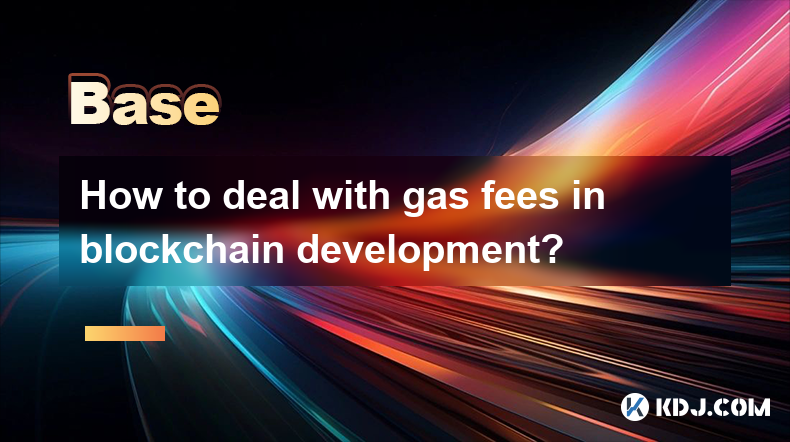
Key Points:
- Understanding the nature of gas fees and their role in Ethereum and other EVM-compatible blockchains.
- Strategies for minimizing gas fees during development and deployment.
- Techniques for optimizing smart contracts to reduce gas consumption.
- Utilizing alternative networks and layer-2 scaling solutions to mitigate high gas fees.
- Methods for budgeting and forecasting gas costs in blockchain projects.
How to Deal with Gas Fees in Blockchain Development?
Gas fees are a crucial aspect of interacting with blockchain networks like Ethereum. They represent the computational cost of executing transactions and smart contracts. Understanding and managing these fees is essential for successful blockchain development. High gas fees can significantly impact the viability and scalability of decentralized applications (dApps). This article explores various strategies to effectively handle gas fees throughout the development lifecycle.
Understanding Gas Fees:
Gas fees are paid in the native cryptocurrency of the blockchain (e.g., ETH on Ethereum). The amount depends on the complexity of the transaction and the network's congestion. Higher network activity leads to higher gas prices. Developers need to accurately estimate gas costs to avoid unexpected expenses or transaction failures due to insufficient funds.
Minimizing Gas Fees During Development:
Careful planning and optimization are crucial for reducing gas costs. Choosing the right tools and techniques can significantly lower the overall expenditure.
- Optimize Smart Contract Code: Efficiently written smart contracts consume less gas. Avoid unnecessary loops, complex calculations, and redundant operations. Utilize storage efficiently and minimize data manipulation.
- Use Libraries and Existing Contracts: Leveraging pre-built libraries and well-tested contracts reduces development time and often results in more gas-efficient code. Reusing components eliminates the need to write redundant code.
- Batch Transactions: Combine multiple transactions into a single batch to reduce the overall gas cost. This is particularly effective for operations like minting multiple NFTs or transferring multiple tokens.
- Off-Chain Calculations: Perform computationally intensive tasks off-chain whenever possible, reducing the burden on the blockchain and consequently the gas fees. This involves using oracles or other off-chain mechanisms.
Advanced Techniques for Gas Optimization:
Beyond basic optimization, several advanced techniques can further minimize gas consumption.
- Static Analysis Tools: Utilize static analysis tools to identify potential gas optimization opportunities in smart contract code before deployment. These tools can highlight inefficient code patterns and suggest improvements.
- Gas Profilers: Employ gas profilers to pinpoint specific sections of code that consume the most gas. This allows for targeted optimization efforts, maximizing the impact of your improvements.
- Solidity Compiler Optimizations: The Solidity compiler offers various optimization flags that can be used to reduce the gas usage of compiled contracts. Experiment with these flags to find the optimal settings for your project.
- Delegated Calls: Use delegated calls (delegatecall) instead of regular calls (call) where appropriate to save gas when calling functions within the same contract. This reduces the overhead associated with function calls.
Utilizing Alternative Networks and Layer-2 Solutions:
High gas fees on mainnets like Ethereum can be prohibitive. Consider alternative solutions:
- Test Networks: Conduct thorough testing on test networks (like Goerli or Rinkeby) before deploying to mainnet. This avoids costly mistakes on the main network.
- Layer-2 Scaling Solutions: Use layer-2 solutions like Optimism, Arbitrum, or Polygon to significantly reduce transaction costs. These solutions process transactions off-chain before submitting them to the mainnet.
- Alternative Blockchains: Explore alternative blockchains with lower gas fees, such as Binance Smart Chain (BSC) or Solana. However, carefully evaluate the trade-offs in terms of security, decentralization, and ecosystem maturity.
Budgeting and Forecasting Gas Costs:
Accurate gas cost estimation is vital for project planning and budgeting.
- Gas Estimation Tools: Utilize gas estimation tools provided by various platforms and wallets to predict the gas cost of transactions before execution. These tools provide approximate estimates based on current network conditions.
- Historical Data Analysis: Analyze historical gas price data to understand price fluctuations and trends. This helps in making informed decisions about transaction timing and budgeting.
- Contingency Planning: Always include a buffer in your gas budget to account for unexpected price spikes or unforeseen circumstances. This ensures that transactions are not rejected due to insufficient gas.
- Automated Gas Management: Consider implementing automated gas management systems to dynamically adjust gas prices based on network conditions. This can help to optimize transaction costs without manual intervention.
Frequently Asked Questions:
Q: What are the factors affecting gas fees?
A: Gas fees are primarily influenced by network congestion (demand), the complexity of the transaction (computation required), and the current gas price set by miners or validators.
Q: How can I reduce gas fees for NFT minting?
A: Minting multiple NFTs in a single transaction (batch minting), using optimized smart contracts, and employing layer-2 solutions can all reduce gas costs significantly.
Q: Are gas fees a permanent feature of blockchains?
A: While gas fees are currently a common mechanism for securing and incentivizing blockchain networks, ongoing research and development aim to create more efficient and cost-effective solutions, including layer-2 scaling and alternative consensus mechanisms.
Q: What happens if I don't pay enough gas?
A: If you don't pay enough gas for a transaction, it will fail, and your funds might be lost (depending on the specific scenario and the smart contract design). The transaction won't be processed.
Q: How do I choose the right gas price?
A: The optimal gas price depends on your urgency. A higher gas price increases the likelihood of your transaction being processed quickly, while a lower price might result in longer processing times or even transaction failure during periods of high network congestion. Monitoring gas price trends helps to make informed decisions.
Disclaimer:info@kdj.com
The information provided is not trading advice. kdj.com does not assume any responsibility for any investments made based on the information provided in this article. Cryptocurrencies are highly volatile and it is highly recommended that you invest with caution after thorough research!
If you believe that the content used on this website infringes your copyright, please contact us immediately (info@kdj.com) and we will delete it promptly.
- Coinbase, Altcoins, and Listings: What's the Buzz?
- 2025-07-01 00:30:11
- Chainlink's Bullish Signals: Investors Bet on Long-Term Value
- 2025-07-01 00:50:12
- Bybit, Kraken, and Tokenized Stocks: A New Era for Trading?
- 2025-07-01 00:30:11
- MicroStrategy, S&P 500, and Crypto News: A Wild Ride for Bitcoin and Beyond
- 2025-07-01 00:55:11
- Week Review: Neo Updates, Crypto Market Movers, and the Stablecoin Evolution (June 23-29)
- 2025-07-01 01:00:12
- Crypto.com & dYdX: Derivative Trading Revolutionized for Everyone
- 2025-07-01 00:35:12
Related knowledge
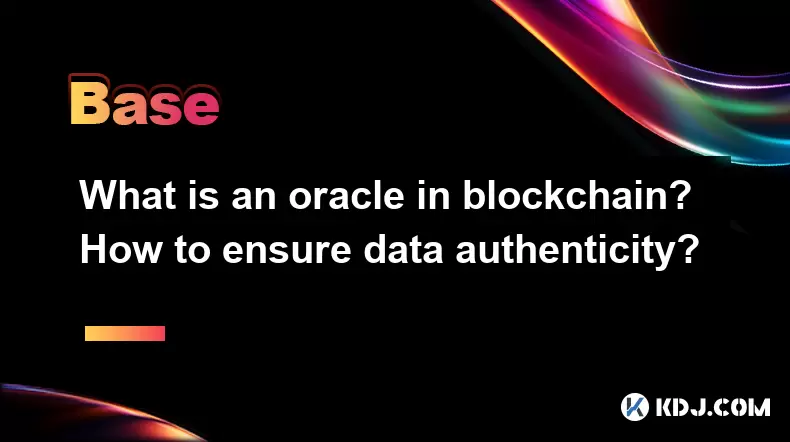
What is an oracle in blockchain? How to ensure data authenticity?
Jun 19,2025 at 08:49pm
Understanding the Role of an Oracle in BlockchainIn the context of blockchain technology, an oracle serves as a bridge between the blockchain and external data sources. While blockchains are inherently secure and decentralized, they cannot access real-world information on their own. Oracles enable smart contracts to interact with off-chain data such as ...
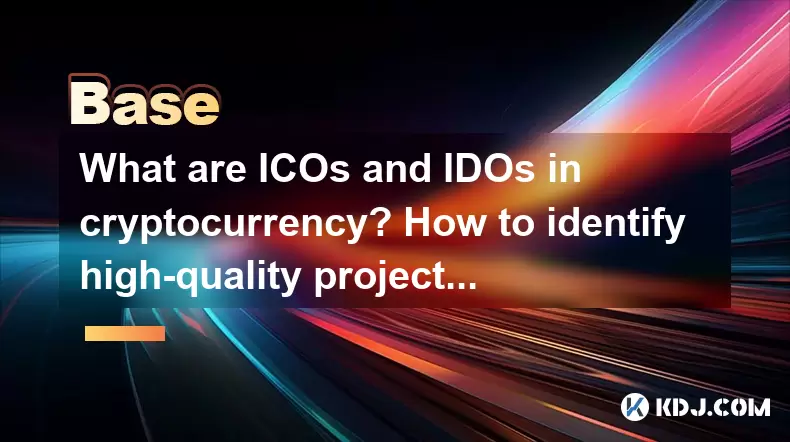
What are ICOs and IDOs in cryptocurrency? How to identify high-quality projects?
Jun 22,2025 at 11:49am
Understanding ICOs in CryptocurrencyInitial Coin Offerings (ICOs) are fundraising mechanisms used by cryptocurrency startups to raise capital for their projects. In an ICO, a company creates and sells its own tokens to investors in exchange for established cryptocurrencies like Bitcoin or Ethereum. The process typically involves the release of a whitepa...
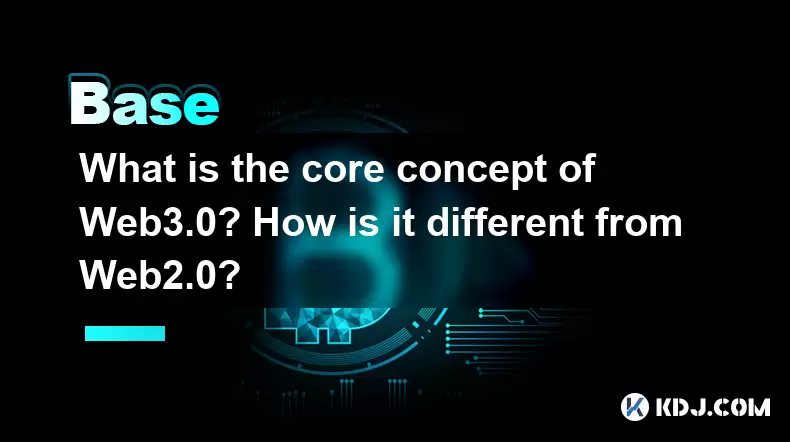
What is the core concept of Web3.0? How is it different from Web2.0?
Jun 21,2025 at 05:56pm
Decentralization as the Foundation of Web3.0The core concept of Web3.0 revolves around decentralization, which fundamentally challenges the centralized architecture of Web2.0. In Web3.0, control and ownership are distributed across a network rather than being held by a central authority or corporation. This is achieved primarily through blockchain techn...
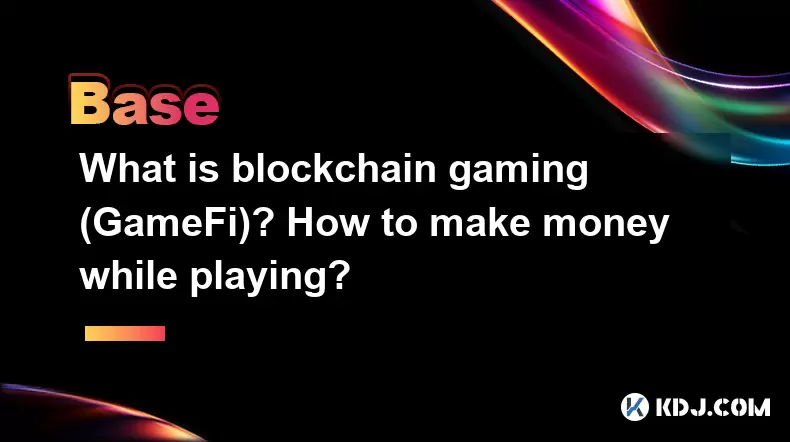
What is blockchain gaming (GameFi)? How to make money while playing?
Jun 20,2025 at 07:56am
Understanding Blockchain Gaming (GameFi)Blockchain gaming, often referred to as GameFi, is a fusion of blockchain technology and video games. It enables players to own in-game assets through non-fungible tokens (NFTs) and earn rewards via cryptocurrencies or token-based systems. Unlike traditional games where items are controlled by centralized develope...
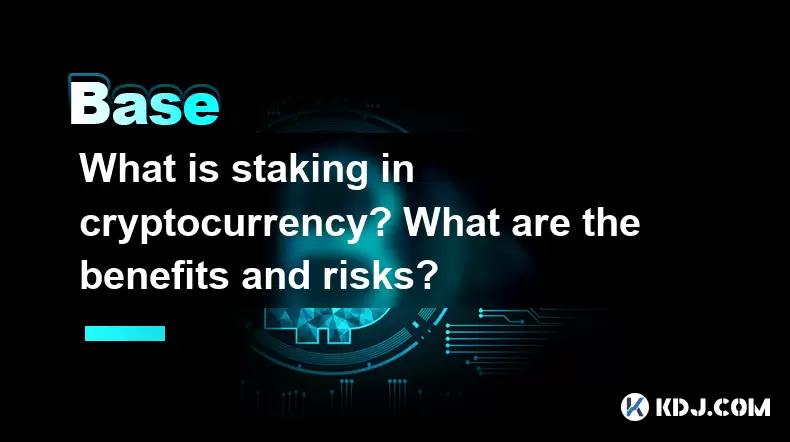
What is staking in cryptocurrency? What are the benefits and risks?
Jun 22,2025 at 10:01am
Understanding the Concept of Staking in CryptocurrencyStaking in cryptocurrency refers to the process of actively participating in transaction validation on a blockchain network that uses a Proof-of-Stake (PoS) consensus mechanism. Instead of miners competing to solve complex mathematical puzzles as in Proof-of-Work systems like Bitcoin, PoS blockchains...
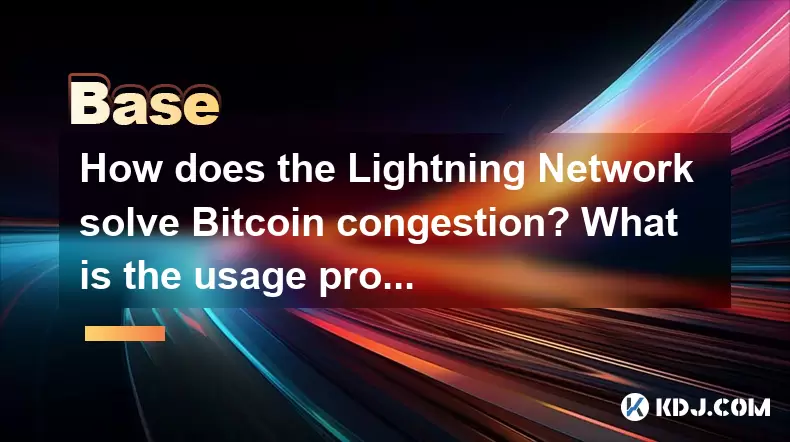
How does the Lightning Network solve Bitcoin congestion? What is the usage process?
Jun 23,2025 at 06:21pm
Understanding Bitcoin Network CongestionBitcoin, as a decentralized digital currency, operates on a blockchain that records every transaction in a public ledger. Each block has a limited size, typically 1 megabyte, which allows for only a certain number of transactions per second (TPS). When the number of transactions increases, the network becomes cong...

What is an oracle in blockchain? How to ensure data authenticity?
Jun 19,2025 at 08:49pm
Understanding the Role of an Oracle in BlockchainIn the context of blockchain technology, an oracle serves as a bridge between the blockchain and external data sources. While blockchains are inherently secure and decentralized, they cannot access real-world information on their own. Oracles enable smart contracts to interact with off-chain data such as ...

What are ICOs and IDOs in cryptocurrency? How to identify high-quality projects?
Jun 22,2025 at 11:49am
Understanding ICOs in CryptocurrencyInitial Coin Offerings (ICOs) are fundraising mechanisms used by cryptocurrency startups to raise capital for their projects. In an ICO, a company creates and sells its own tokens to investors in exchange for established cryptocurrencies like Bitcoin or Ethereum. The process typically involves the release of a whitepa...

What is the core concept of Web3.0? How is it different from Web2.0?
Jun 21,2025 at 05:56pm
Decentralization as the Foundation of Web3.0The core concept of Web3.0 revolves around decentralization, which fundamentally challenges the centralized architecture of Web2.0. In Web3.0, control and ownership are distributed across a network rather than being held by a central authority or corporation. This is achieved primarily through blockchain techn...

What is blockchain gaming (GameFi)? How to make money while playing?
Jun 20,2025 at 07:56am
Understanding Blockchain Gaming (GameFi)Blockchain gaming, often referred to as GameFi, is a fusion of blockchain technology and video games. It enables players to own in-game assets through non-fungible tokens (NFTs) and earn rewards via cryptocurrencies or token-based systems. Unlike traditional games where items are controlled by centralized develope...

What is staking in cryptocurrency? What are the benefits and risks?
Jun 22,2025 at 10:01am
Understanding the Concept of Staking in CryptocurrencyStaking in cryptocurrency refers to the process of actively participating in transaction validation on a blockchain network that uses a Proof-of-Stake (PoS) consensus mechanism. Instead of miners competing to solve complex mathematical puzzles as in Proof-of-Work systems like Bitcoin, PoS blockchains...

How does the Lightning Network solve Bitcoin congestion? What is the usage process?
Jun 23,2025 at 06:21pm
Understanding Bitcoin Network CongestionBitcoin, as a decentralized digital currency, operates on a blockchain that records every transaction in a public ledger. Each block has a limited size, typically 1 megabyte, which allows for only a certain number of transactions per second (TPS). When the number of transactions increases, the network becomes cong...
See all articles

























































































